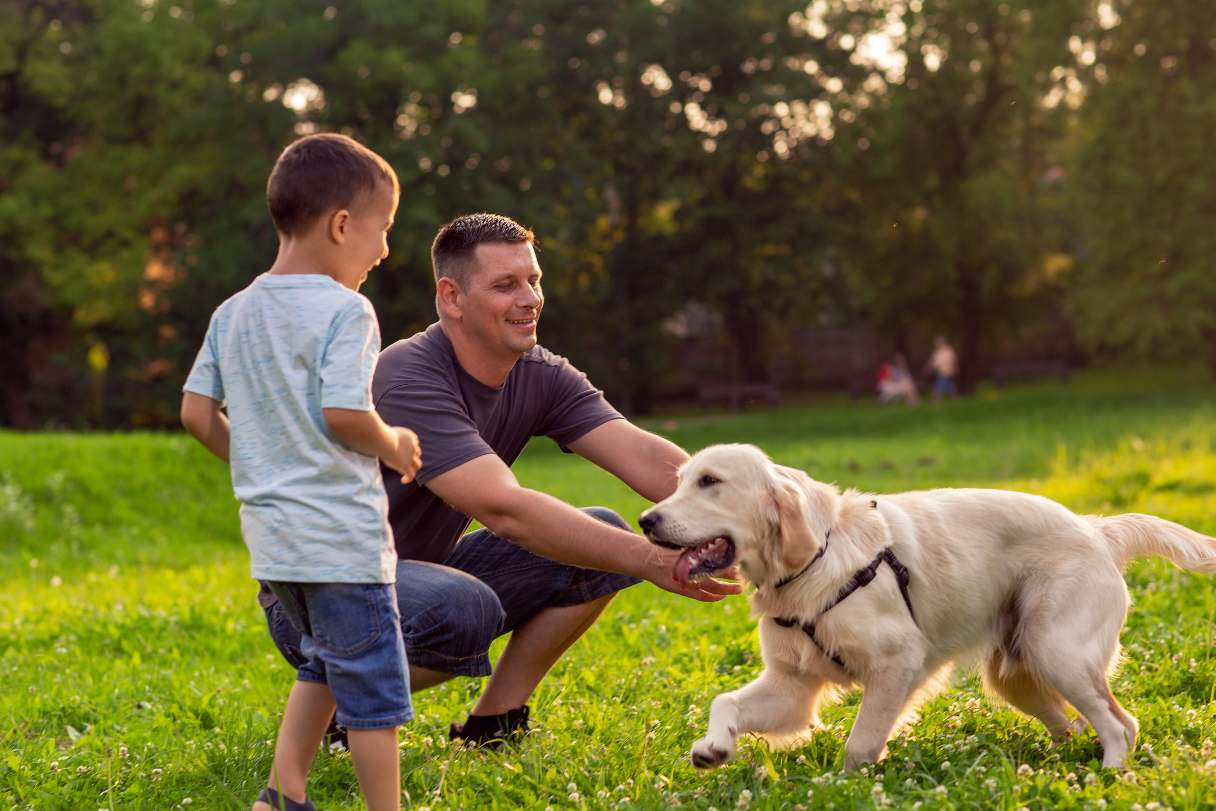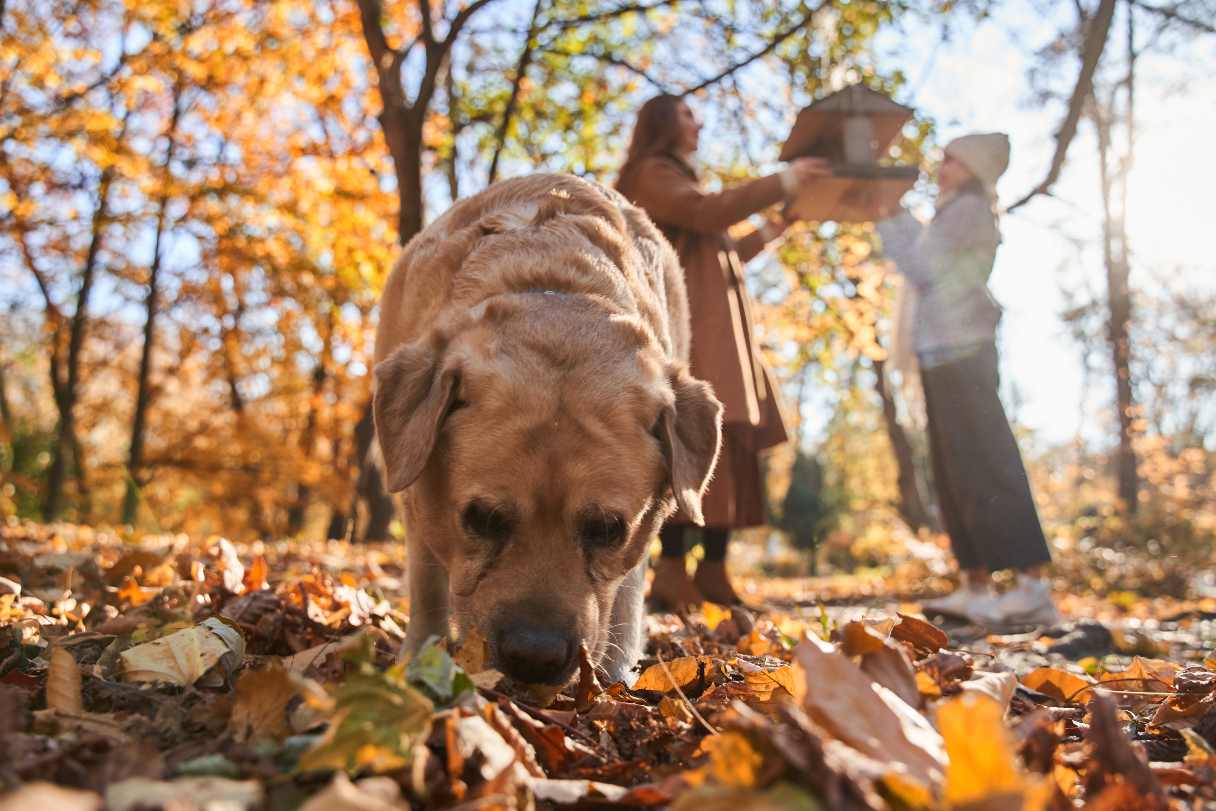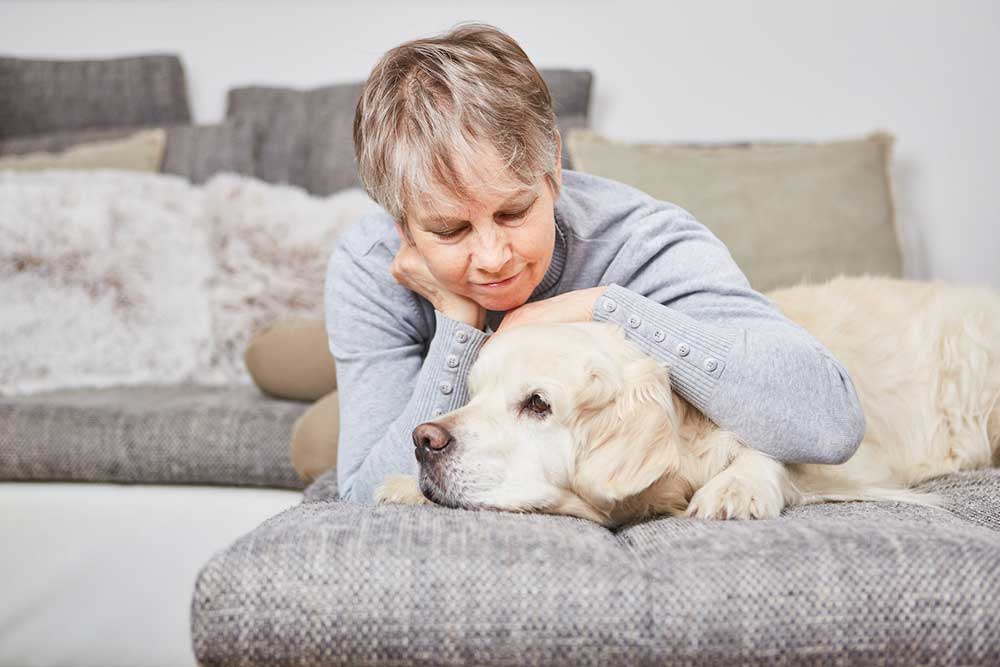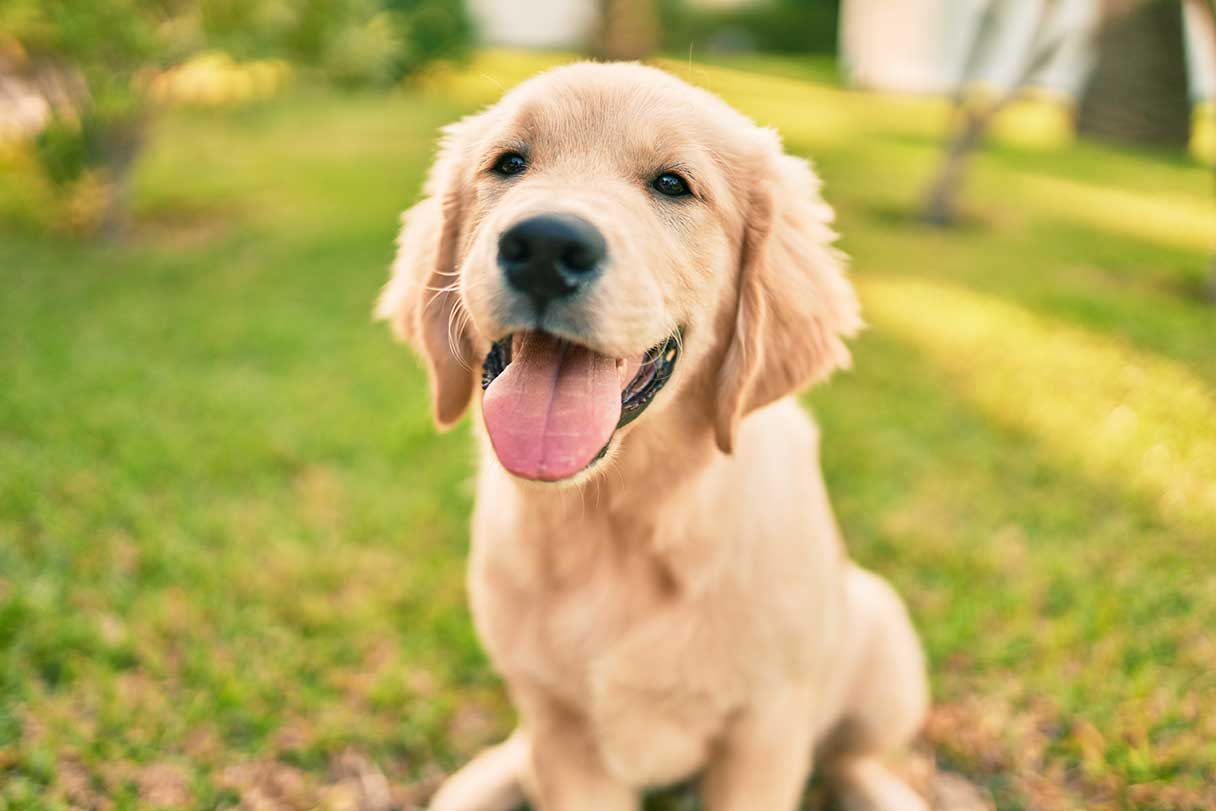Did you know that health problems can show up in your dog’s poop? It might not be something you relish the idea of getting close to, but if you keep a dog, you’re probably already scooping it up anyway.
Taking a minute to see whether or not those doggie nuggets appear healthy can tell you a lot about how your dog is feeling and whether they need to see the vet. Here’s what you need to know about dog poop so you can tell when your pooch’s health may be suffering.
What a Dog’s Poop Can Say About Their Health
The color, consistency and content of your dog’s poop can provide a lot of clues about what’s going on inside them.1 Things like digestive issues, dehydration, poor diet, liver and kidney disease, internal parasites and internal injuries will all affect the appearance of your dog’s solid waste.1 Those doggie droppings can also tell you whether your dog has eaten something they shouldn’t have.2
Depending on your pup’s other symptoms, your vet might even ask you to bring a stool sample with you when you take them for an exam. So paying attention to your dog’s poop can help you help your vet narrow down a diagnosis if your dog gets sick.2
Healthy vs. Unhealthy Dog Poop
Many vets will have you pay attention to the four Cs of dog poop:3
-
Color
-
Consistency
-
Contents
-
Coating
Healthy poop is the color of chocolate, has the consistency of children’s modeling clay, doesn’t have any strange contents or coatings and holds its shape, which should look like a small log.1
Anything that differs from this is a sign that something could be wrong. Here’s a breakdown of each factor and what abnormalities might mean for your dog’s health.
Color
Dog poop that’s any color other than solid brown is a cause for concern. Unhealthy dog poop might come out in the following colors:3
-
Green dog poop. Your pup’s poop could take on a green hue if you feed them a lot of greens, which is fine. But if it’s green from eating a lot of grass, this could be a sign of an upset tummy. Green poop can also signal something more serious, like an infection, an infestation of intestinal parasites or gallbladder issues. If you don’t believe eating greens is the cause, you should contact your vet, who will probably want to see a stool sample.
-
Yellow or orange dog poop. From time to time, your dog's poop may be yellowish-brown but otherwise normal.3 But when that yellow or orange poop is also watery, it can indicate problems with the liver, gallbladder or pancreas and is a sign that you should contact your vet.4
-
Red streaks or red dog poop. Food dyes or naturally red foods can cause a pink or red tinge to otherwise healthy dog poop. But bright red streaks in your dog’s poop likely indicate bleeding somewhere in the intestines or rectal tract. Take note of any other symptoms and contact your vet for advice as soon as possible.
-
Black dog poop. Black or dark red, tarry-looking stool usually contains blood that has been digested. This could be a sign of internal bleeding or an undiagnosed medical condition. If your dog’s poop looks like this, you should get them to a vet as soon as possible.
-
Gray dog poop. Issues with the liver or pancreas can cause your dog’s poop to turn gray. It might also mean they’ve eaten too much fatty food, especially if the gray poop is greasy. Poop this color should quickly be brought to your vet’s attention.
-
White dog poop. White poop can be caused by a diet that’s too rich in calcium, and it can also be a sign of constipation. If your dog shows other symptoms or their poop comes out white for longer than 24 hours, you should contact your vet.
-
White spots in dog poop. White spots that look like rice grains on fresh poop could be a sign of tapeworms. If you see this, you should call your vet and pick up a sample to bring in for testing.1
Consistency
Healthy dog poop should be firm with the slight “squish” of play dough when you pick it up, and it should hold its tubular shape well. Here are what other types of consistency might suggest about your dog’s health:3
-
Slightly softer stool. Dog stool that’s a little softer than normal and doesn’t hold its shape as well isn’t ideal, but it is considered normal.3 This can be caused by the stool simply absorbing more water than normal due to the amount of time spent sitting in the colon.5
-
Mushy, loose or formless. This is a type of diarrhea that typically signals gastrointestinal distress, possibly due to eating foods that are too rich.4
-
Watery or runny. This is also diarrhea. This type of poop could have several causes, including illness or infection, parasites, switching to a new dog food or stress. If diarrhea persists for more than a day or two or is accompanied by other symptoms, you should contact your vet.
-
Hard. Hard dog poop is a sign of constipation and can be caused by too little moisture or not enough fiber in the diet. But it could also be a sign of kidney disease or chronic digestive issues. If your dog regularly strains a lot to go or if their poop is hard, you should have them checked out by a vet.
Contents
Apart from occasional undigested bits of food or ingested hair, normal dog poop typically doesn’t contain anything. But here are some things you might see in dog poop that shouldn’t be there:3
-
Pieces of food. Large amounts or chunks of undigested food in your dog’s stool might mean they’re having difficulty properly digesting their food. If it happens frequently, you should bring it up to your vet. If your dog is also vomiting or showing other signs of illness, you should get them to the vet as soon as possible.
-
Hair. Again, a little bit of hair isn’t unusual. But if your dog’s poop is as furry as they are, you should contact your vet, especially if they’re also throwing up or losing weight. Too much hair in their intestines could be causing a blockage that requires veterinary attention.
-
White specks, grains or moving bits. These are all signs of internal parasites. While this is most common in puppies, it can occur in dogs of any age. If you notice this, you should talk to your vet about deworming your dog.
-
Other objects. Dogs ingest all kinds of things that they shouldn’t, and these things usually show up in their poop. If you find a partial object, such as material from a chewed sock or part of a chew toy, keep a close eye on your pup and call your vet for advice. Objects like these could cause an intestinal blockage or internal injury that has the potential to be life-threatening.
Coating
A small amount of mucus in your dog’s poop on occasion isn’t out of the ordinary.4 But a heavy coating of slime or jelly covering the stool is a sign of irritated and inflamed bowels.3
This could be caused by a number of things that should be diagnosed by a vet. And if it’s accompanied by vomiting or weight loss, you should have them checked out immediately.3
Factors Affecting Your Dog’s Poop
A lot of things can influence the appearance of dog poop. Here are some of the most common factors:
1. Diet
Your dog’s diet might be one of the biggest determiners of the condition of their stool. High-fiber diets can increase the size and volume of their poop.1 Diets that are low in fiber or too rich in calcium can cause hard, pellet-like poop.3 Also, letting your fur pal eat sugary treats can cause stomach upset that leads to diarrhea.6 So can switching their dog food too abruptly.7
Another reason to be cautious about giving your dog sweets is that artificial sweeteners can be toxic to dogs. This could cause vomiting and diarrhea along with other, more dangerous symptoms.6
Fiber in your dog’s diet can go a long way toward keeping their poop normal and healthy. Adding fiber-rich foods like plain canned pumpkin to their diet can help keep them regular and can also serve as a home remedy for diarrhea caused by digestive issues.8 This also helps with constipation.8 You should talk to your vet about the right amount of canned pumpkin to feed to your dog, both as a remedy and as a regular supplement.
2. Stress
Stress can cause a dog to experience diarrhea, but this is usually temporary.3 Other signs of stress in dogs include:9
-
Pacing
-
Unexplained shivering
-
Whining
-
Drooling
-
Excessive licking
-
Panting when they’re not hot
-
Hiding
-
Other unexplained changes in behavior or body language
3. Parasites
Worms and other internal parasites usually affect the appearance of dog poop. Worms and their eggs or larvae may be visible to the naked eye in otherwise normal-looking dog poop.1 But intestinal parasites can also cause runny or watery diarrhea.3
4. Illness
Viruses and bacterial infections are common causes of diarrhea in dogs. But more serious illnesses — like liver or kidney disease, pancreas issues, gallbladder issues and even cancer — can also affect the color and consistency of dog poop.3
5. Allergies
Food allergies or intolerances can result in diarrhea or colon inflammation (colitis) that can cause a coating of mucus to cover your dog’s poop.3 Food allergies usually also cause external symptoms to the skin and coat, like rash and redness, itching and scratching and thinning fur.10
6. Dehydration
Constipation, and the hard, pellet-like poop that often accompanies it, can be the result of dehydration.3 It’s important to make sure your dog has plenty of fresh, clean water to drink throughout the day to keep them hydrated and improve their digestive health.
7. Medication
Medications often have side effects that can impact your dog’s digestive health and their poop. Antibiotics may cause dogs to have diarrhea.11 Also, antihistamines and diuretic drugs can cause constipation.12 Always check the side effects of medications that you give to your dog, and mention any persistent changes in their poop to your vet.
Poop Watching for Your Dog’s Health
It might not be your favorite hobby, but keeping a watchful eye on your fur bud’s leavings could be one of the quickest ways to know when something’s wrong. One or two instances of diarrhea or constipation aren’t necessarily reasons to rush to the vet. But if these conditions persist, or if the poop is a strange color, you should definitely reach out to your vet and ask what they think. And if these changes in your dog’s poop are accompanied by other symptoms that might indicate pain or illness, it’s best to err on the side of caution and treat it like an emergency.
Frequently Asked Questions About Dog Poop
Do you still have questions about dogs and their poop? Here are answers to some commonly asked questions.
CareCredit Credit Card Financing for Dogs
Taking good care of your pet's well-being from nose to tail is essential. Make sure to stay up to date on their regular checkups at the vet to help keep your pet happy and healthy for a lifetime of love. You can use your CareCredit credit card for pet care throughout the year for routine veterinary services as well as emergencies and surgeries.* Use our Acceptance Locator to find a veterinarian near you that accepts CareCredit.
CareCredit is there for you and your pet every step of the way; continue your wellness journey by downloading the CareCredit Mobile App to manage your account, find a provider on the go and easily access the Well U blog for more great articles, podcasts and videos.
In addition to pet care, you can also use your CareCredit credit card for dentistry, cosmetic, vision, hearing, health systems, dermatology, pharmacy purchases, spa treatments and so much more within the CareCredit network. How will you invest in your health and wellness next?
Author Bio
Jean Marie Bauhaus is a freelance writer and novelist who has been writing pet content since 2013. Her work has appeared on Forbes.com, Hill's Pet, Chewy, AKC.org and more.








